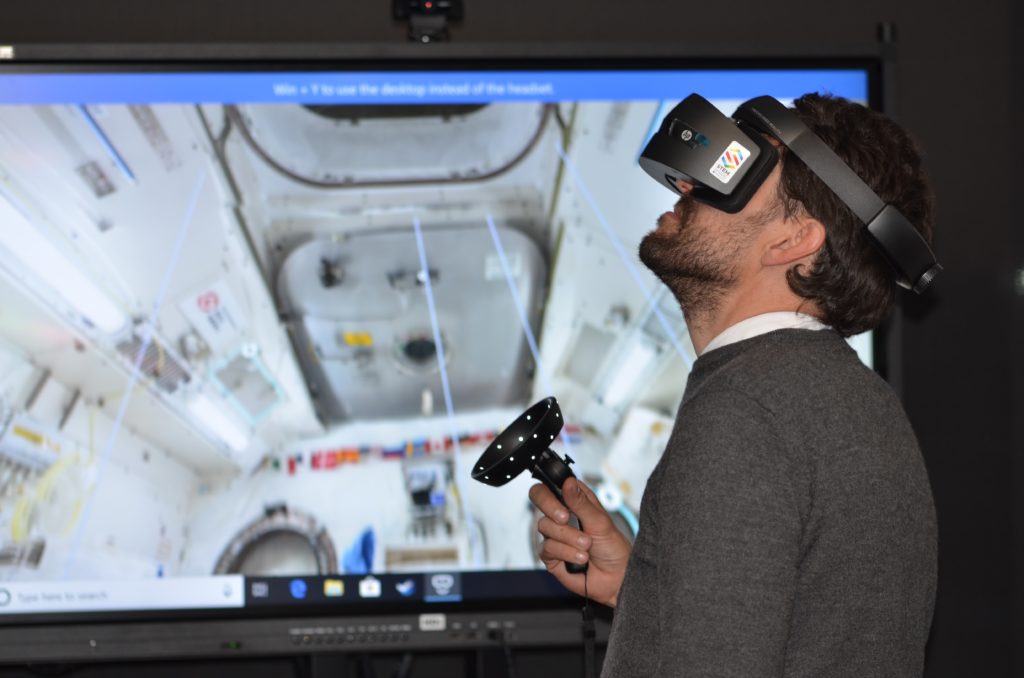
Virtual reality (VR) is a technology that allows users to experience a simulated environment that feels real. It can be used to create immersive experiences that allow users to learn about different cultures, historical events, or scientific concepts. For example, VR can be used to take users on a tour of a historical site or to explore the surface of Mars. It can also be used to create interactive experiences that allow users to participate in activities or events that they would not otherwise be able to do, such as playing sports with professional athletes or experiencing the thrill of riding a roller coaster.
VR is a powerful tool for public engagement because it can create immersive and interactive experiences that help people learn and grow. It can also be used to create experiences that are fun and exciting, which can help people to connect with the content that is being presented. For example, the Museum of London is using VR to allow visitors to experience the Great Fire of London in 1666, and the Tate Modern is using VR to allow visitors to experience the work of Vincent van Gogh.
VR has been used for a variety of public engagement purposes, including providing education and training, promoting tourism, and engaging with the public on social issues. However, it is important to use VR in a way that is ethical and responsible. For example, it is important to make sure that VR experiences are not too realistic, as this could lead to anxiety or stress. Additionally, it is important to make sure that VR experiences are accessible to all people, including those with disabilities.
Moreover, VR can be used to create experiences that promote empathy and understanding of different perspectives, such as experiencing life as a refugee or a person with a disability. VR can also be used to create experiences that promote social change and advocacy, such as simulating the effects of climate change or experiencing life in different socio-economic conditions.
One of the potential drawbacks of VR is that it may not be able to replace real-life experiences entirely. For example, while VR can provide an immersive experience of visiting a historical site, it cannot replace the physical experience of being there in person. Therefore, it is important to use VR as a supplement to real-life experiences, rather than a replacement.
Moreover, it is important to consider the ethical implications of using VR for public engagement. For instance, VR experiences should not promote harmful or discriminatory messages. Additionally, VR experiences should be designed in a way that does not exploit vulnerable populations or perpetuate harmful stereotypes.
Despite these challenges, VR has the potential to be a powerful tool for public engagement. VR has been used for a variety of public engagement purposes, such as providing education and training, promoting tourism, and engaging with the public on social issues. VR can be a powerful tool for public engagement, but it is important to use it in a way that is ethical and responsible. As VR technology continues to develop, it is likely that we will see even more innovative and effective uses of VR for public engagement.
In conclusion, VR is a technology that has the potential to revolutionize public engagement by providing immersive and interactive experiences that help people learn and grow. VR can create experiences that promote empathy and understanding of different perspectives, and social change and advocacy. However, it is important to use VR in a way that is ethical and responsible, and to consider the potential drawbacks of this technology. By doing so, we can create innovative and effective VR experiences that promote empathy, understanding, and positive social change.

2 responses to “Virtual Reality for Public Engagement”
Piece of writing writing is also a excitement, if you know then you can write otherwise it is difficult to write.
Hi there, its nice article on the topic of media print, we all understand media is a wonderful source of data.